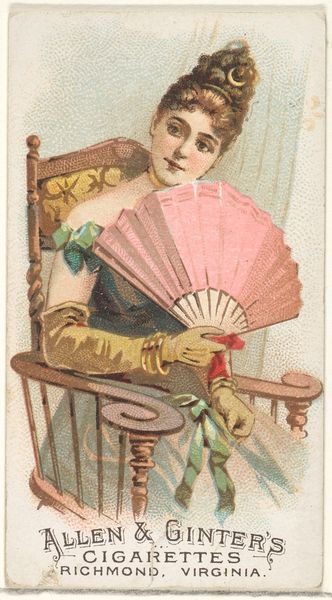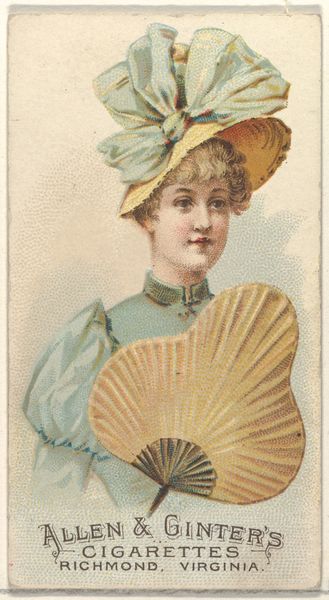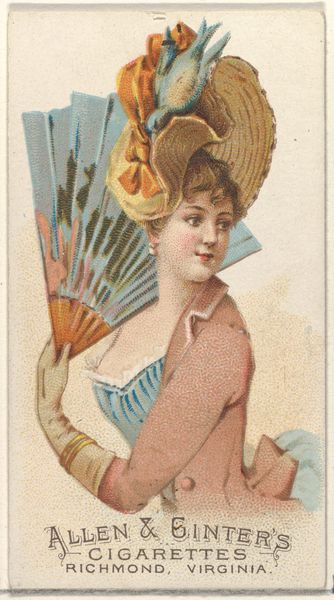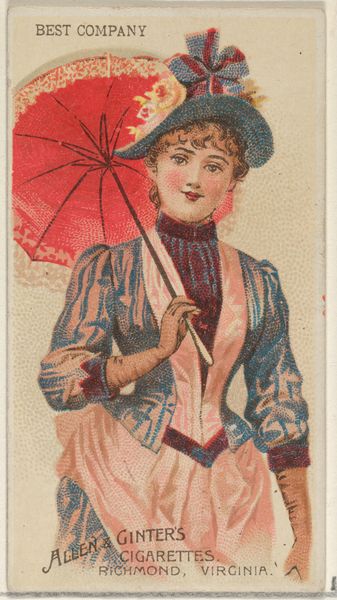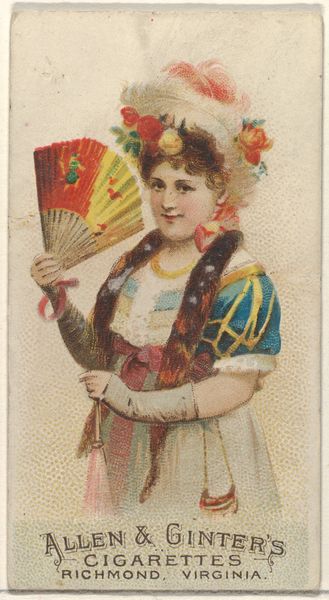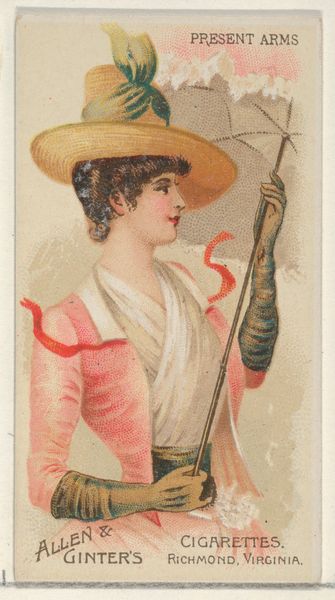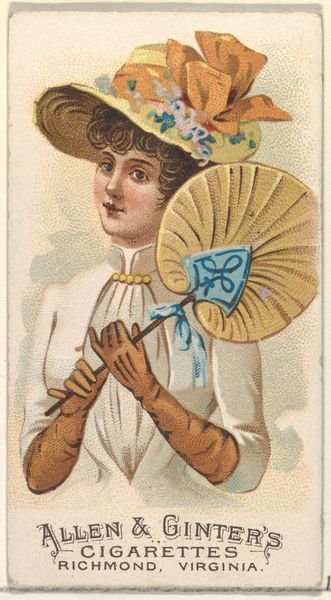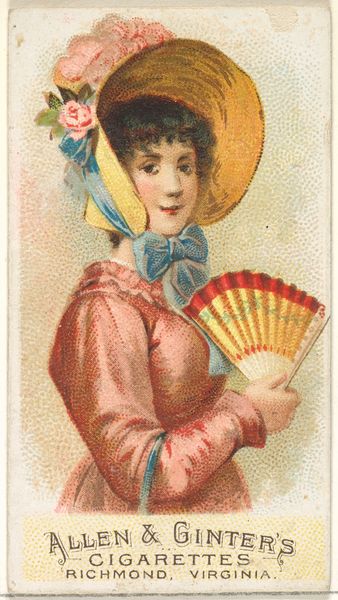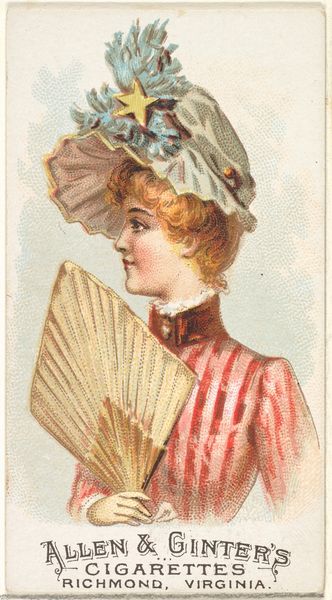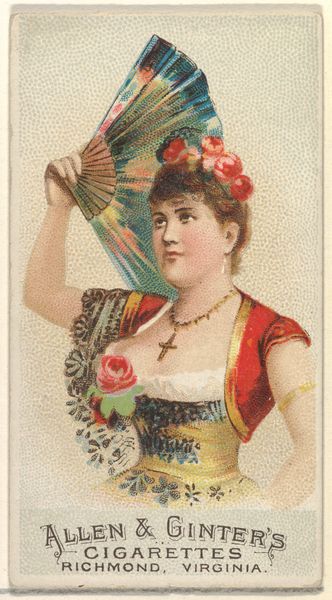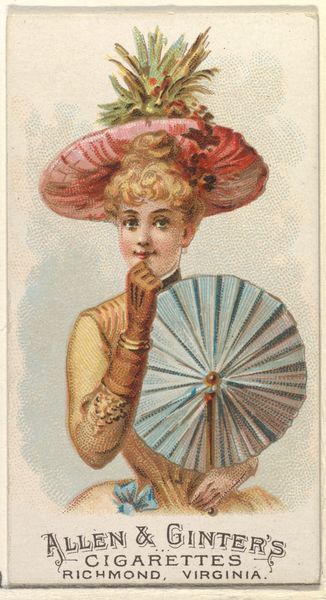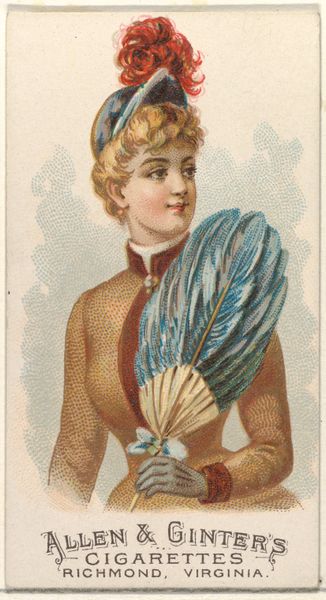
Plate 43, from the Fans of the Period series (N7) for Allen & Ginter Cigarettes Brands 1889
0:00
0:00
#
portrait
# print
#
figuration
#
coloured pencil
#
japonisme
Dimensions: Sheet: 2 3/4 x 1 1/2 in. (7 x 3.8 cm)
Copyright: Public Domain
Curator: The delicate colours lend this print, titled “Plate 43, from the Fans of the Period series (N7) for Allen & Ginter Cigarettes Brands,” a rather ethereal quality. Editor: It feels immediately like an object of fantasy. There’s a dreamlike quality, a wavering between worlds that makes me want to understand the precise construction of its imagery. Curator: Produced around 1889, it offers us a peek into the world of Japonisme, reflecting the late 19th-century Western fascination with Japanese art and design. Allen & Ginter, a cigarette brand, issued these collectible cards featuring idealized images of women in vaguely Japanese dress. Editor: The tension, for me, comes from that “vaguely Japanese” descriptor. It is a portrait, undeniably Western in features, lightly costumed, you might say, in the signs of Japan. Note the woman's face: its sharp realism jars slightly with the more stylised rendering of the costume and fan. What are we to make of this meeting of different formal vocabularies? Curator: We can certainly explore this in terms of cultural appropriation, the way that the West selectively consumed and aestheticized aspects of Japanese culture without fully understanding or respecting their original context. The fan, the kimono-esque robe, these become mere ornaments divorced from their deeper meanings. Editor: Absolutely. And if we shift focus slightly, it's hard not to see how these images shaped perceptions and even contributed to constructing the ‘Orient’ in the Western imagination. Consider the commercial context as well; it's a piece of marketing material that exploits exoticism to sell a product. Curator: Precisely. And it presents challenges to the traditional understanding of portraiture. While ostensibly depicting an individual, its ultimate purpose is less about conveying personal identity and more about representing a generalized, romanticized image of “Japan.” Look closely at the line and subtle shading, and one sees how meaning can become both concentrated and diluted by commercialism. Editor: The combination of coloured pencil and print, medium and the chosen aesthetic style underscores that artificiality even further. Its construction isn't meant to be a true likeness. Curator: This work forces us to consider the politics embedded within seemingly innocuous decorative arts. Editor: I leave pondering that uncomfortable tension between genuine aesthetic appreciation and problematic cultural consumption.
Comments
No comments
Be the first to comment and join the conversation on the ultimate creative platform.
